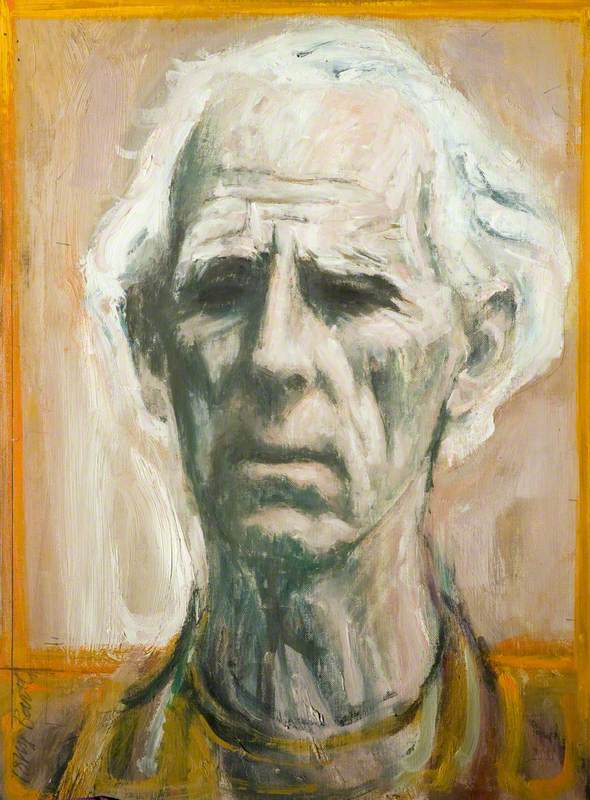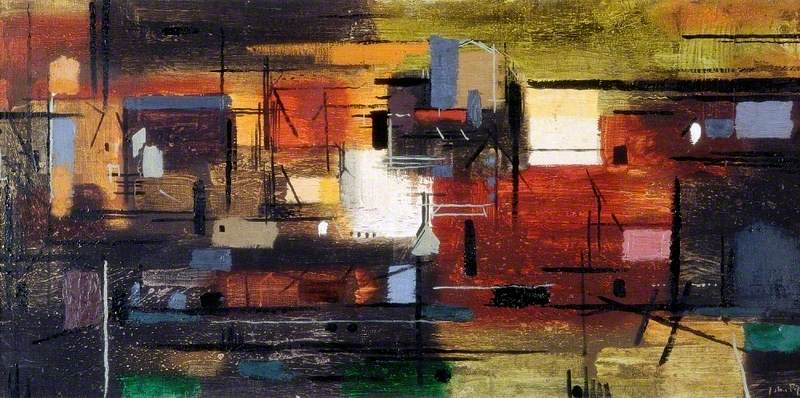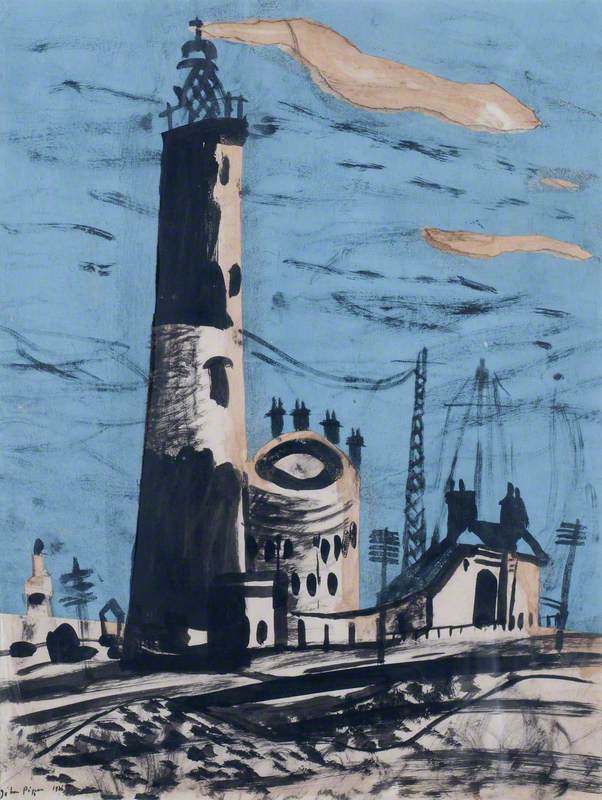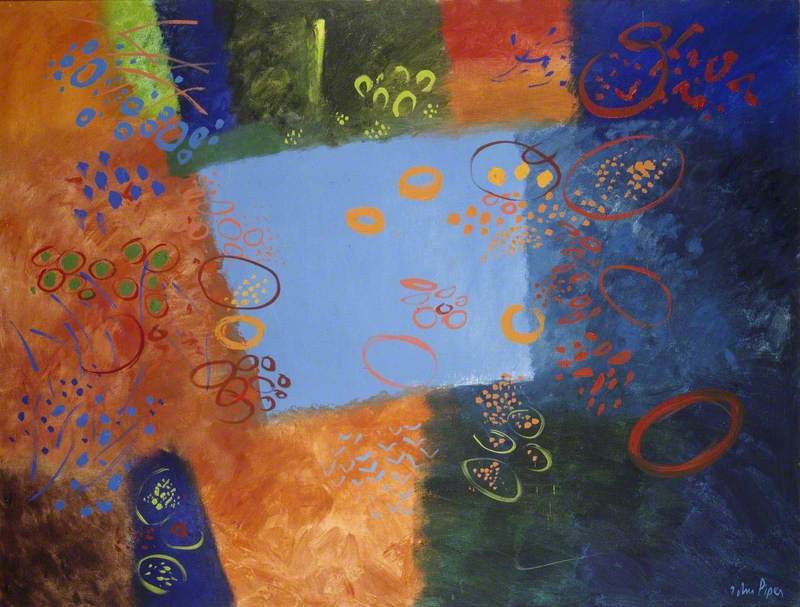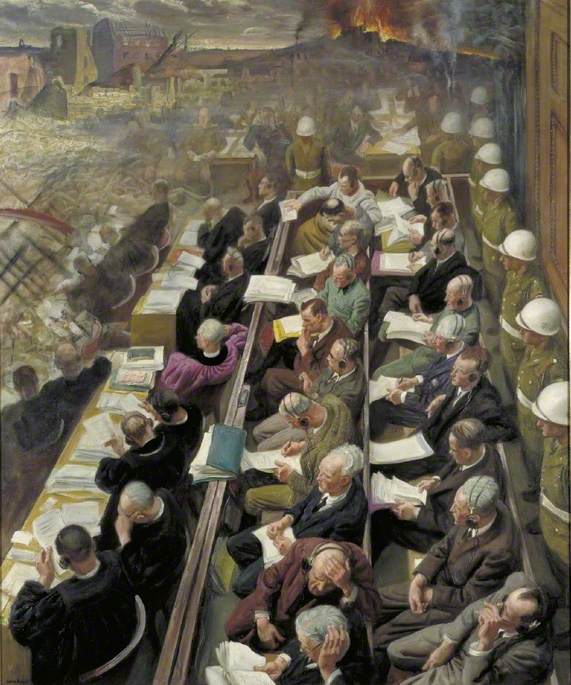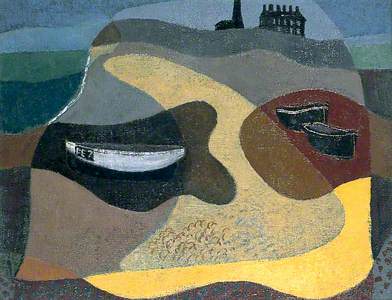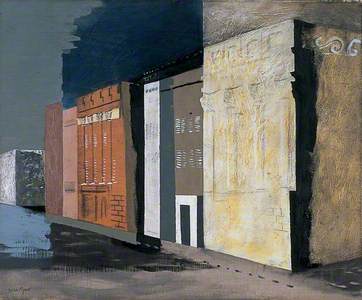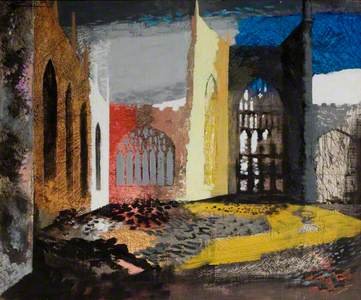John Piper (1903–1992) was a polymath – a painter, draughtsman, printmaker, muralist, photographer, potter, stained glass, textile and tapestry designer and writer. He also designed costumes, and stage sets especially for Benjamin Britten's operas Death in Venice and The Turn of the Screw. He was a late starter, having been obliged initially to enter his father's law firm, with the result that he did not enrol at the Royal College of Art (RCA) until he was 24, following a brief spell at Richmond School of Art to improve his life drawing skills.
Defying college rules he married Eileen Holding, a fellow student at Richmond, and quit the RCA in December 1929 without a diploma: something he regretted in later years. Piper was ambitious and in a hurry to make a name for himself, contributing articles and reviews to The Nation and Athenaeum, as well as steeping himself in the study of mediaeval stained glass, about which he would write many years later in Stained Glass: Art or Anti-Art (Studio Vista, 1968).
His romantically inspired work from the early 1930s often involved the use of collage and the incorporation of newsprint. In 1934 he met Myfanwy Evans, whom he later married following his divorce from Holding, and together they founded Axis, modelled on the French publication Abstraction-Création, the first issue of which appeared in January 1935.
For the next few years, Piper imposed on himself the discipline of producing exclusively non-figurative work. Although he regarded these paintings as something of an intellectual exercise, they placed him firmly at the forefront of the British avant-garde along with Ben Nicholson, Henry Moore, Barbara Hepworth and Edward Wadsworth. He was elected to the Seven and Five Society (later the '7 & 5') in 1934 and in 1936, playing an important role both as promoter and exhibitor, as well as designing the poster for the exhibition 'Abstract and Concrete', which was shown in Oxford, Liverpool, and the Lefevre Gallery, London.
Piper's multi-media works from this period show his awareness and understanding of contemporary French painting, especially that of his friend Jean Hélion, much of which was illustrated in Axis. Works such as Abstract Construction, incorporating sand and wood as well as oil, rank among the classic non-figurative works of the 1930s.
Dead Resort Kemptown, Brighton, East Sussex
c.1939
John Piper (1903–1992) 
Piper's defection from the ranks of the avant-garde and return to figurative painting around 1938 was regarded by Nicholson and others as a betrayal. Piper himself regarded it as a liberation, a 'coming out', revelling in his return to the mediaeval-inspired vision which lay at the heart of his interests. His burgeoning friendships with Benjamin Britten, James Richards and John Betjeman encouraged this change of direction, which he celebrated with the publication of Brighton Aquatints (Duckworth, 1939), delighting not only in Brighton's Regency architecture but also in mastering the arcane process of aquatint engraving and printing.
Piper's wide range of interests was matched by the diversity of the means and media in which he expressed them – oil, gouache, watercolour, collage, photography, photo-montage, aquatint, lithography, stained glass. In addition to his strongly idiosyncratic vision, one thing unites all his work and that is the depth and richness (not to be confused with brightness) of his use of colour, stemming from his lifelong passion for mediaeval stained glass. This, combined with his romantic love of ruins, whether of rustic cottages or the fire-gutted shell of Sir John Vanburgh's masterpiece Seaton Delaval Hall, made him, with the outbreak of war, the perfect choice for Recording Britain and the War Artists' Advisory Committee, chaired by Kenneth Clark.
Interior of Coventry Cathedral, 15 November 1940
1940
John Piper (1903–1992) 
By good fortune he was on hand to record the immediate aftermath of the bombing of Coventry during the night of 14th–15th November 1940, producing several of his finest paintings: Coventry Cathedral, 15 November, 1940 and Interior of Coventry Cathedral, 15 November 1940 shimmer with the heat of the still-burning fires.
The Ruined Council Chamber, House of Commons, May 1941
1941
John Piper (1903–1992) 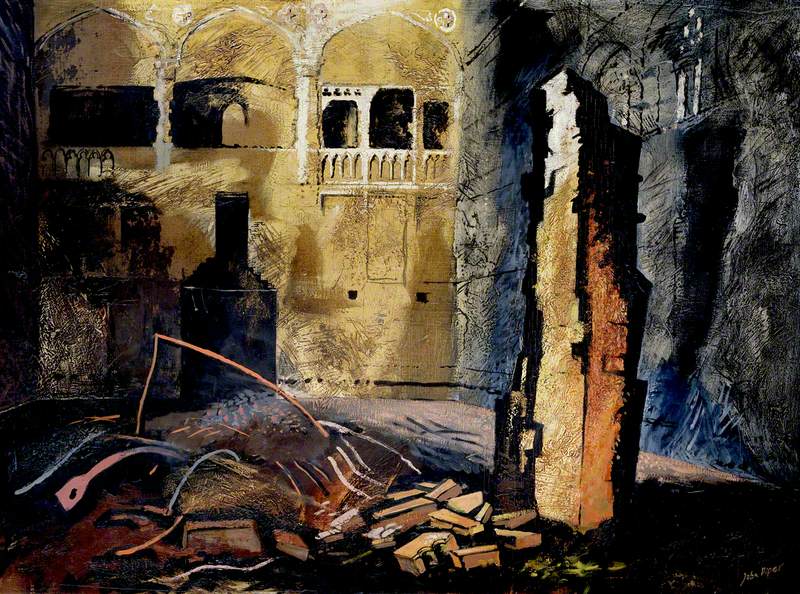
The same is true of his paintings of the wrecked Council Chamber of the House of Commons in the immediate aftermath of its bombing the following June. These and other similar works are among the finest oil paintings that Piper ever did. Never again was he to work with so much passion and under such pressure.
Piper was commissioned in 1941 to paint two series of watercolours of Windsor Castle for the Queen. On viewing them Sir Arthur Penn, Keeper of the Privy Purse, described him as 'a slightly melancholy artist, who appears to regard nature through a glass darkly.'
Much of his later painted and graphic work was in this quasi-picturesque manner, though somewhat diluted. With the exception of his 42-panel mural, The Englishman's Home, for the Festival of Britain, he applied much of his energy during the post-war years to pursuing other interests, particularly the theatre, often working with John Cranko and Benjamin Britten (for whom Myfanwy was librettist), and stained glass.
It was through his stained glass designs particularly, much of it executed in collaboration with Patrick Rentjens, that he made his greatest contribution to the arts in Britain during these years, most notably the sequence of windows for the chapel at Oundle School (mid-1950s), Coventry Cathedral (1961), Robinson College, Cambridge (late 1970s) and the John Betjeman memorial window in Farnborough (1986). His final years were marred by dementia and he died at home on 28th June 1992.
Peyton Skipwith, fine art consultant and author

